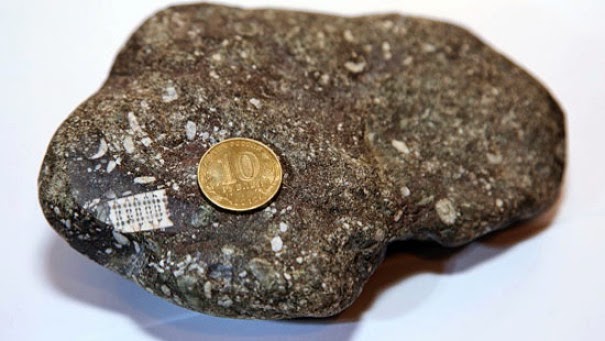250-Million-Year-Old Stone With Microchip Print Discovered
It looks like researchers from Russia have found a 250 million-year-old microchip. Researchers have made another incredible discovery in Labinsk, Russia. According to scholars, this discovery marks the beginning of a completely new history, one that many ancient alien theorists have been talking about for years.
The object that researchers have found is believed to be some sort of ancient microchip and according to researchers, these ancient microchips date back millions of years.
After countless tests, researchers have come to the conclusion that this antique piece was used as some sort of microchip in ancient times.

The problem is its age, according to tests, the artefact is believed to be between 225 and 250 million years old.
Some researchers believe that the dating of the artefact is not entirely accurate given the fact that you cannot date rock, and the tests were based on traces of organic material found around the mystery “chip”.
The million-dollar question is, who and what used a microchip that dates back 250 million years? Is there a possibility that this is in fact the remains of ancient technology? Technology that belonged to a highly advanced civilization that inhabited Earth millions of years ago?
Or is there a possibility that this artefact did not originate from Earth, but on another planet, belonging to an extraterrestrial species?
Better yet, what makes Russia so unique is that numerous artefacts, like the one we see here, have been discovered over the years.

This “ancient microchip” was discovered in the Krasnodar region, and ufologists have already tagged this discovery as a fragment of technology previously unknown to science.
Like many other discoveries, this remarkable artefact was found by chance by a local fisherman by the name of Viktor Morozov who donated his curious finding to scholars from the University of Southern Polytechnic Nowoczerkaskiej who performed several tests and concluded that embedded into the rock, is a strange “device” which strangely resembles modern-day microchips.
Researchers have not tried removing the alleged microchip from the rock for fear that the might damage it.

Geologists and researchers cannot explain the origin of this fantastic finding and there are numerous possibilities that explain what this object is.
Extraterrestrial technology, evidence of sophisticated ancient societies, or just one of those strange rocks made by mother nature.
Some researchers point out that this might actually be part of a stem plant, such as lillies, skeptics have already “debunked” this finding suggesting that it is noting worth the while, just like many other discoveries which couldn’t be explained, so the best guess was… “its nothing important”, however, the origin of this artefact and many others also discovered in Russia have not been explained.





